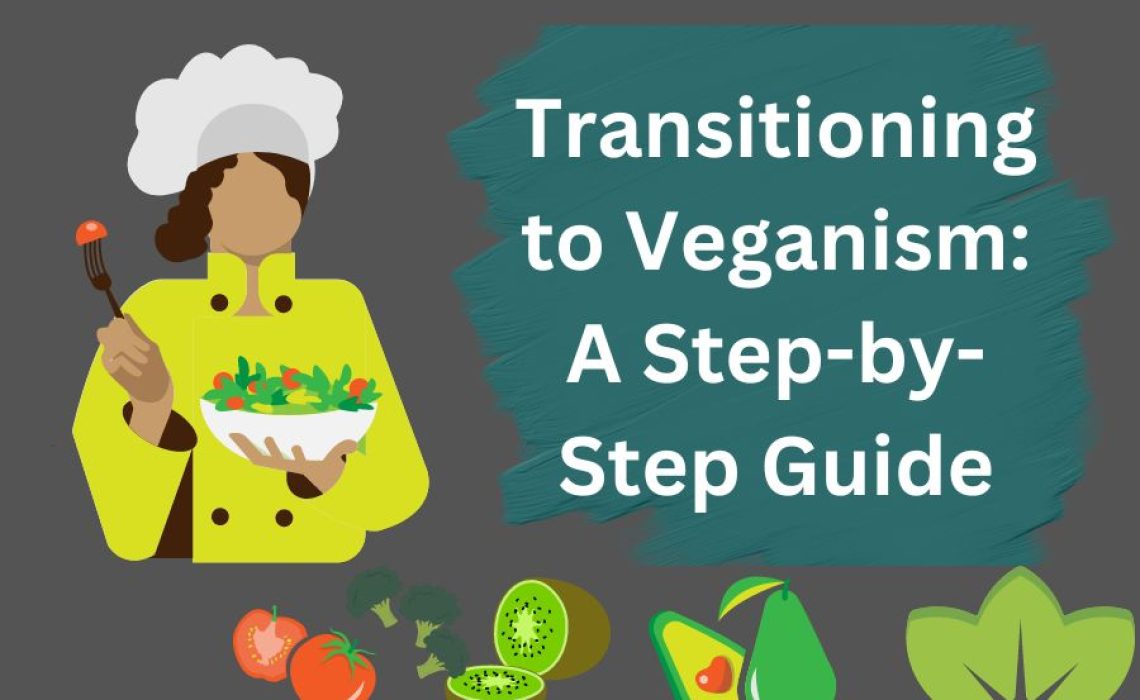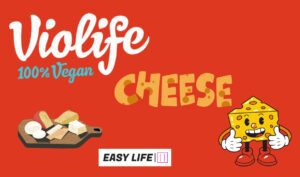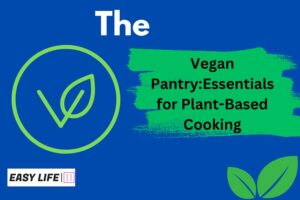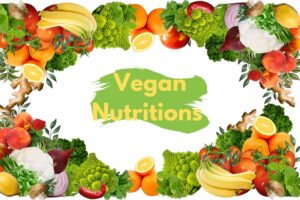Transitioning to Veganism: In recent years, the world has seen a significant rise in individuals choosing to adopt a vegan lifestyle. This shift is not merely a dietary change, but a commitment to a philosophy that seeks to avoid harm to all living beings. Whether driven by health considerations, environmental concerns, or compassion towards animals, veganism is gaining mainstream acceptance.
Veganism goes beyond a plant-based diet, extending to all aspects of life that involve animal products. It’s about making conscious, ethical choices that align with a commitment to animal rights and welfare. Adopting such a lifestyle can seem challenging, but with the right approach and resources, the transition can be smooth and fulfilling.
In this blog post, we aim to provide a comprehensive, step-by-step guide for those considering transitioning to veganism. We will cover the basics of veganism, the preparatory steps one should take, a guide to making the transition, how to overcome common challenges and resources that can help along the way. Whether you’re taking the first step towards veganism or simply curious about what the journey entails, this guide aims to equip you with the necessary knowledge and tools.
Table of Contents
Toggle1. Understanding Veganism
Before delving into the transition process, it’s important to have a solid understanding of what veganism truly means.
A. Definition and Principles of Veganism
Veganism is a lifestyle and dietary choice that seeks to exclude all forms of exploitation and cruelty to animals. This means not only abstaining from meat, fish, and poultry but also avoiding other animal-derived products such as dairy, eggs, honey, and gelatin. It also extends to non-food products like leather, fur, silk, and certain cosmetics and soaps derived from or tested on animals.
B. Common Misconceptions About Veganism
Many misconceptions surround veganism. Some people equate it with eating only raw or ‘bland’ foods, while others think it’s costly or nutritionally deficient. In reality, a well-planned vegan diet can be flavorful, economical, and nutritionally complete.
C. Benefits of Veganism
- Health Benefits: A balanced vegan diet can be rich in nutrients and lower in saturated fats, which can contribute to improved heart health, lower cancer risk, and better management of diabetes and weight.
- Environmental Benefits: Veganism can significantly reduce your ecological footprint as it requires fewer resources and generates fewer greenhouse gases compared to animal agriculture.
- Ethical Considerations: By choosing veganism, you’re taking a stand against animal cruelty and exploitation, contributing to a more compassionate and humane world.
Understanding veganism in its entirety allows for a more informed and committed transition. With this foundation, we can now explore the preparatory steps necessary for a smooth transition to a vegan lifestyle.
2. Preparing for the Transitioning to Veganism
Once you have a solid understanding of veganism and its implications, the next step is to prepare for the transition. This phase is crucial, as it sets the tone for your vegan journey.
A. Self-assessment: Reasons for Choosing Veganism
Identify your motivations for wanting to adopt a vegan lifestyle. Are you driven by health concerns, environmental reasons, animal welfare, or all of the above? Understanding your ‘why’ will provide a strong foundation and motivation during your transition and beyond.
B. Research on Vegan Nutrition and Lifestyle
Educate yourself about vegan nutrition to ensure you’re getting all the necessary nutrients. Look into plant-based sources of protein, iron, calcium, omega-3 fatty acids, and vitamin B12. Also, research vegan alternatives for your favourite non-vegan foods and learn about vegan-friendly products beyond the realm of food.
C. Consultation with a Healthcare Provider or a Nutritionist
Before making significant dietary changes, it’s advisable to consult a healthcare provider or a registered dietitian. They can provide personalized advice based on your nutritional needs, health status, age, and lifestyle.
D. Setting Realistic and Achievable Goals
Set achievable goals for your transition. You might choose to start by eliminating one animal product at a time, or by having vegan meals a few times a week. Remember, it’s not a race; it’s about making sustainable changes that align with your lifestyle and comfort level.
By preparing thoroughly, you increase your chances of a successful and stress-free transition to veganism. With a clear understanding of why you’re making this change, knowledge about vegan nutrition, professional advice, and realistic goals, you’re well-equipped to start your vegan journey.
3. Step-by-Step Guide to Transitioning to Veganism
Transitioning to a vegan lifestyle can be a significant change, but breaking it down into manageable steps can make the process easier and more enjoyable.
A. Step 1: Gradually Reducing Animal Products
Start by reducing your consumption of animal products. You might begin with meat, then move on to fish, dairy, and eggs. This gradual process can make the shift less overwhelming and give your body time to adjust.
B. Step 2: Experimenting with Vegan Substitutes
Explore the wide range of vegan substitutes available for meat, dairy, and other animal products. These can help satisfy cravings and make meals feel familiar. Try different brands and products to find those that you enjoy the most.
C. Step 3: Incorporating More Whole Plant-Based Foods
Begin to incorporate more whole plant-based foods into your diet. Fruits, vegetables, legumes, grains, nuts, and seeds should make up the majority of your meals. These foods are not only vegan but are also rich in nutrients and fibre.
D. Step 4: Learning to Read and Understand Food Labels
Not all products that appear vegan are actually vegan. Learn to read food labels to identify hidden animal-derived ingredients. Look out for ingredients like whey, casein, gelatin, and certain food colourings that are not vegan.
E. Step 5: Learning New Recipes and Cooking Techniques
Expand your cooking repertoire by learning new vegan recipes. There are countless resources online, including blogs, YouTube channels, and social media pages dedicated to vegan cooking.
F. Step 6: Staying Balanced and Meeting Nutritional Needs
Monitor your nutrient intake to ensure you’re getting a balanced diet. Pay special attention to nutrients that can be challenging to get from a vegan diet, such as vitamin B12, iron, calcium, iodine, and omega-3 fatty acids.
G. Step 7: Adjusting and Adapting to Social Situations
Prepare yourself for social situations. Learn how to navigate restaurant menus, politely turn down non-vegan food, and explain your dietary choices to others in a respectful way.
Remember, transitioning to veganism is a personal journey that should be tailored to your own pace and comfort level. Take the time to enjoy the process and celebrate each step you take towards a more compassionate lifestyle.
4. Overcoming Common Challenges: Transitioning to Veganism
Transitioning to a vegan lifestyle can come with its fair share of challenges. However, with preparation and a problem-solving mindset, these hurdles can be overcome.
A. Dealing with Cravings for Animal Products
Cravings are normal, especially in the early stages. When you experience a craving, try to find a vegan alternative that satisfies it. Over time, as your taste buds adapt, these cravings are likely to diminish.
B. Ensuring Nutritional Adequacy
Ensuring a balanced nutrient intake can seem challenging but is entirely achievable with planning. Include a variety of foods in your diet to meet your nutrient needs. Consider fortified foods or supplements for nutrients like Vitamin B12, which are difficult to obtain from plant-based sources.
C. Navigating Social Situations and Dining Out
Eating out or attending social events can be challenging as a vegan. Research restaurants in advance, don’t hesitate to ask questions about the ingredients, and consider eating something before you go to events where vegan options may be limited.
D. Handling Criticism or Lack of Support
You may face criticism or lack of understanding from others about your choice to go vegan. Stay firm in your convictions, be willing to educate others, but also respect their dietary choices.
Remember, every challenge is an opportunity to learn and grow. With time and experience, you’ll find your own strategies to deal with these issues and confidently live a vegan lifestyle.
5. Resources for Transitioning to Veganism
As you begin your vegan journey, various resources can provide support, guidance, and inspiration. These include educational material, recipe sources, and community platforms.
A. Recommended Books and Documentaries
Numerous books and documentaries offer insightful information about veganism. Books like “How Not to Die” by Dr Michael Greger, “And Eating Animals” by Jonathan Safran Foer, and documentaries such as “Forks Over Knives”, “Cowspiracy”, and “The Game Changers” can be informative and inspiring.
B. Websites and Apps for Vegan Recipes and Lifestyle Tips
There’s a wealth of vegan recipes and lifestyle tips online. Websites like Minimalist Baker, Oh She Glows, and apps like HappyCow (which helps find vegan-friendly restaurants) can be incredibly useful.
C. Communities and Support Groups for Vegans
Joining vegan communities, both online and offline, can provide support, share experiences, and ask questions. Social media platforms have numerous groups where vegans share their journey, tips, and recipes.
D. Vegan-friendly Brands and Shopping Tips
Several brands cater specifically to vegans, and many mainstream brands offer vegan products. Researching and identifying these can make shopping easier. Look for certifications like the “Certified Vegan” logo to ensure products meet vegan standards.
Remember, you’re not alone in your vegan journey. These resources can provide guidance, inspiration, and a sense of community as you navigate your transition to a vegan lifestyle.
6. Maintaining a Vegan Lifestyle
Once you’ve transitioned to a vegan lifestyle, the next step is to maintain it in a sustainable, enjoyable, and healthful way.
A. Regularly Checking In with Health Professionals
It’s important to have regular check-ups with a healthcare provider or a registered dietitian. They can help monitor your nutrient levels, provide guidance on supplements if necessary, and give personalized advice to ensure you’re maintaining a balanced diet.
B. Continued Learning and Adaptation
Stay open to learning more about vegan nutrition, new vegan products, cooking techniques, and ethical considerations. The world of veganism is dynamic and constantly evolving, and continuous learning can make the journey more enriching.
C. Celebrating Progress and Milestones
Celebrate your progress, no matter how small. Every meal, every day, and every month you maintain a vegan lifestyle is a victory for your health, the environment, and animal welfare.
Remember, maintaining a vegan lifestyle is a journey, not a destination. It’s about making conscious choices that align with your values and contribute to your well-being and that of the planet. With regular health check-ups, continuous learning, and a spirit of celebration, you can sustain and enjoy your vegan lifestyle for the long term.
Conclusion: Transitioning to Veganism
Transitioning to veganism and maintaining a vegan lifestyle is a personal and transformative journey. It’s a commitment that goes beyond diet—it’s about aligning your actions with your values of health, environmental sustainability, and animal welfare.
Though the transition may seem daunting at first, taking a step-by-step approach can make it manageable and enjoyable. Remember, it’s not about perfection, but progression. Every step you take towards reducing harm to animals and improving your health is a step in the right direction.
The challenges that come with this lifestyle change are surmountable, especially with the wealth of resources and supportive communities available to new vegans. And the rewards—improved health, reduced environmental impact, and the peace of mind that comes from living in line with your values—are well worth the effort.
Whether you’re considering veganism or have already begun your journey, we hope this guide has been helpful. As you continue on this path, remember to celebrate your progress, continue learning, and most importantly, enjoy the journey. Veganism is not just a dietary choice; it’s a lifestyle of compassion and mindfulness, one that can bring about positive change in your life and the world around you.










3 thoughts on “Transitioning to Veganism: A Step-by-Step Guide”
Pingback: The Science of Vegan Baking: Egg and Dairy Substitutes
Pingback: Vegan Diet and Athletes: A Winning Combo - 2023
Pingback: Veganism and Mental Health: Is There a Connection?